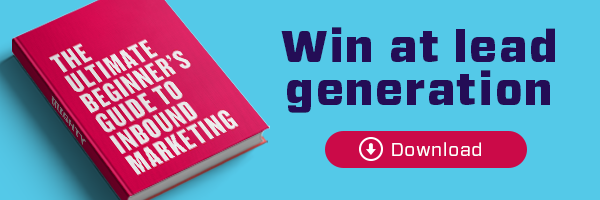Lead qualification is an important aspect of inbound marketing but it's something that few marketers do. All too often marketers get excited about new leads and immediately begin putting valuable time and effort into converting that lead a customer. This is a bad approach for both you and the lead.
If you're not spending time qualify your leads, you could be wasting time and resources barking up the wrong tree. While inbound marketing generally generates more qualified leads than traditional methods, it's important to have a lead qualification process in place. Doing so ensures that you're spending time focusing on leads that are a good fit for your company and makes sure your company is a good fit for that lead.
These tips will help ensure a successful strategy for creating more qualified leads with your inbound marketing efforts.
Your smarketing team needs to define what a qualified lead is.
Marketing and sales teams need to agree on what qualities a good leadneeds to posess. This definition will act as a checklist when a new lead comes in through inbound channels. This step is incredibly important.
Develop a lead flow strategy.
Create a document that defines your different lifecycle stages, when and how they are handed off to sales, andwhen/how these leads should be followed up with. This document should be reviewed by everyone in sales and marketing and stored in a place where everyone has easy access. This document should evolve as your company evolves.
Create a lead scoring system.
Through applying a scoring system to your leads, the appropriate team will know when a lead meets a defined set of criteria. This helps your team easily prioritize the various leads you're getting. Kuno gives a great example on how to set this up.
- Determine point values for the key factors you’ve chosen. Whether it’s job title, industry, annual revenue or number of pages viewed on your website, you need to decide on point values for each of these factors. To keep it simple, consider a point scale of 0 to 100, where 0 means less qualified, and 100 means more qualified.
- Score your leads. Now it’s time to rate all your leads, which is usually done by assigning positive and negative attributes to each contact. Positive attributes might include actions like conversions or webpages visited. Negative attributes could be your contact opting not to receive email updates from you.
- Set a score threshold for when a lead is sales-ready. Your sales team can be notified when a lead has met enough of your criteria to be sales-ready. This could be a point value of 85, for instance. Work with sales to come up with a point value and transfer method that makes sense to them, whether it’s an email, a notification within your CRM or another indicator.
Nurture leads into customers.
Hubspot defines lead nurturing as the process of engaging with a lead in various ways and guiding them through the buyer's journey until they become a customer. As you communicate with leads through emails or other format, their score should change. For example, if a lead continues to open emails or interacts with contact on your blog, their lead score should rise. This helps you understand what they are interested in as well as their level of interest.
Conclusion.
While it may take more effort and time to garner and develop sales qualified leads, they are more likely to turn into customers and remain loyal to your brand. The lifetime value of a qualified customer is worth the energy, don’t you agree?


